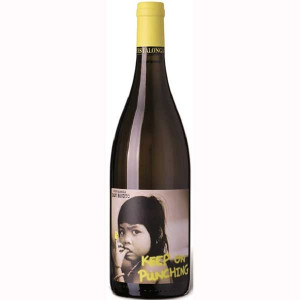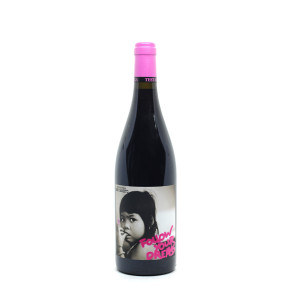The Baby Bandito Stay Brave is a natural, fresh and precise wine with flavors of crunchy green apple, citrus fruits, ginger, flowers and a beautiful minerality. On the palate it is balanced, agile and with excellent freshness.
Region: South Africa.
Grapes: Chenin Blanc.
Alcohol content: 11,5%.
Aging: Some months in steel.
Contains sulfites
The Baby Bandito Keep On Punching is obtained from old Chenin blanc vineyards planted in 1972. Spontaneous vinification in steel tanks and aging in the same. A straw yellow wine. The nose reveals very fresh and lively notes of citrus and white peach. The palate is fine, light and very fresh with a pleasant closing. Delicious and good, it immediately becomes impossible to find.
Region: South Africa.
Grapes: Chenin Blanc.
Alcohol content: 12%.
Aging: Some months in steel.
Contains sulfites
Baby Bandit Chin Up is ruby red. On the nose the aromas recall the juicy red cherry, the strawberry, and the notes of citrus and licorice. In the mouth it is fresh, flowing, with soft and popping tannins. It is a delicious wine, reminiscent of the Languedoc versions.
Region: South Africa.
Grapes: Cinsault.
Alcohol content: 11,5%.
Aging: Some months in steel.
Contains suflites
Baby Bandito Follow Your Dreams by Testalonga is a Carignan-based red wine. A natural, fresh and precise wine with aromas of cherry and raspberry, balanced but at the same time snappy..
Region: South Africa.
Grapes: Carignan.
Alcohol content: 12.5%.
Aging: Some months in barrique.
Contains sulfites





